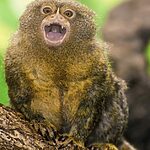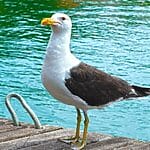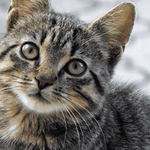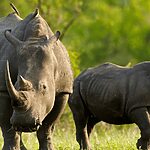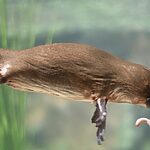Kangaroos are among the most fascinating creatures in the animal kingdom, known for their unique characteristics and behaviors. One of the most intriguing questions often asked is: “Are kangaroos born without hind legs?” This unusual aspect of their development raises many curiosities and concerns, especially for those interested in marsupials and their life cycles.
Understanding kangaroo gestation and early development can be challenging. The idea of a newborn without fully formed legs seems strange and counterintuitive. How do these tiny creatures survive and thrive without this crucial part of their anatomy?
In this article, we will delve into the remarkable journey of a kangaroo from birth to independence, shedding light on how they manage to navigate their early days without fully developed hind legs.

Are They Born Without Hind Legs?
This is actually true, fetal kangaroos are born without hind legs, developing the front paws first, which they use to navigate to the mother’s pouch, where they can suckle on the teat, and grow strong until they are developed enough to leave the pouch.
Most species do not gain this level of dexterity and consciousness until they are much further through the gestation period, but with kangaroos, this doesn’t take too long at all.
Technically speaking, it is not exactly true that kangaroos are born without legs, merely that they haven’t properly formed yet, and there can still be small bumps or stump looking extremities that, while present, are not of any use at that time.
How Long Do Kangaroos Gestate?
Once the egg has been fertilized in the uterus, this forms a neonate – or a fetus – which then emerges after only 33 days.
At this point, it makes its way to the pouch of the mother, where it will suckle on the teat, and remain for another period of time until it is properly developed.
This can take anywhere upto 190 days, after which time the young kangaroo – or Joey – is sufficiently grown to be able to move around on their own for brief periods of time.
This usually begins as a simple head poking out of the pouch, before it will gradually develop more and more bravery and curiosity, spending longer and longer periods of time outside the pouch.
After a period of roughly 235 days, the Joey will leave the pouch for the last time, hopping around on its own with the rest of its mob.
Are Kangaroo Neonates Sentient?
There is a lot of debate about whether kangaroo neonates are actually sentient, or whether the strange process of migration from the uterus to the pouch is purely one driven by nature and evolution.
However, many argue that while it is evolved enough to have the tools needed to undertake this 3-5 minute journey, the rest is entirely down to the fetus itself – suggesting a degree of basic sentience, albeit one driven by evolutionarily determined practices.
This is incredibly impressive and strange, as the kangaroo neonate is still blind, hairless, and possesses no hind legs to speak of.
When Do Hind Legs Develop?
Despite having no hind legs at 33 days, the fetus doesn’t take long for this process to occur, and most have grown hind legs after a period of 3-4 months, after the initial suckling process has elapsed, but before they are fully developed to an extent that it is safe to leave the pouch.
How Does The Pouch Protect The Joey?
The Joeys are protected within the kangaroo mother’s pouch because the pouch itself can only be opened upwards.
This means that it is more difficult for dirt and other debris to get inside, but also that other elements, such as cold and moisture, can’t get in and harm the joey.
Do Kangaroo Pouches Get Dirty?
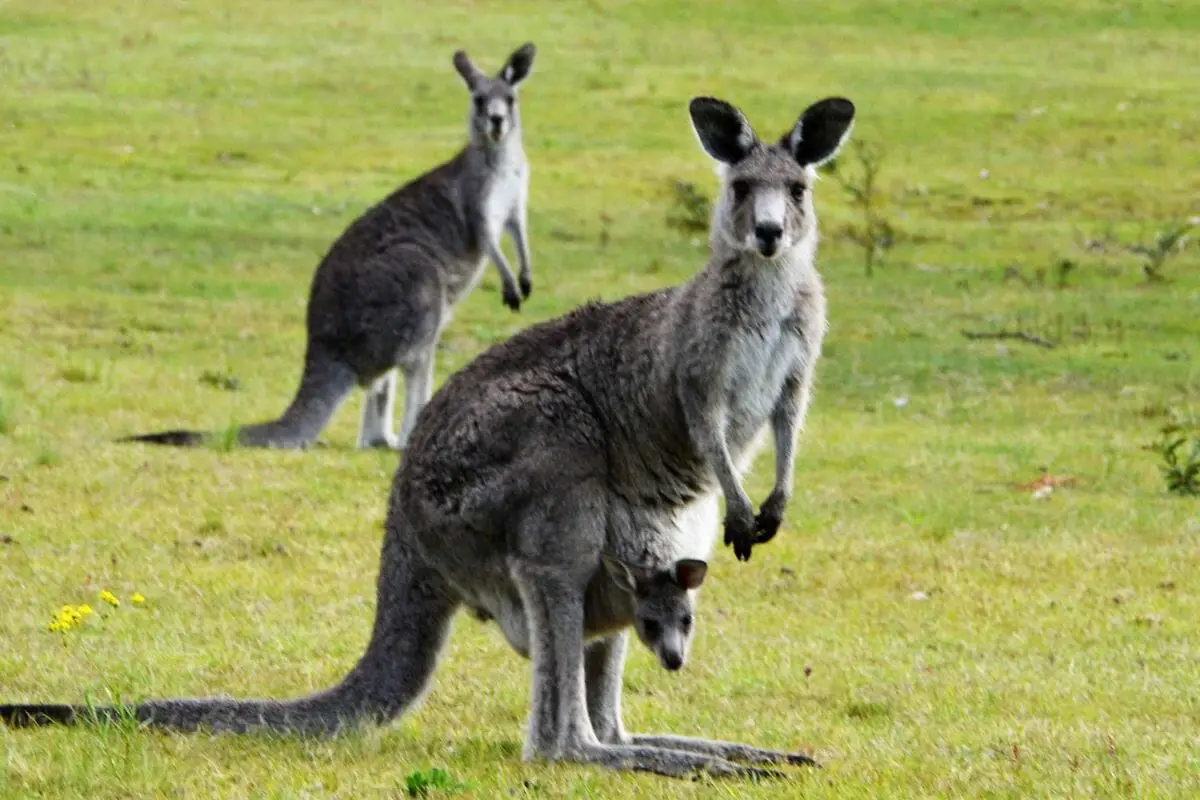
Unsurprisingly, as the joey cannot leave the pouch until mature enough, they use their mother’s pouch as a bathroom – urinating and defecating into the pouch because they have nowhere else to go.
Once the joey is old enough to leave the pouch for short periods of time, they can also collect mud and other debris, which then gets brought back into the pouch with them, only adding to the mess inside.
Think of it as a messy child leaving their room untidy!
Do Kangaroos Clean Their Pouch?
Once the joey is old enough to leave the pouch, the mother will clean the inside, often using their tongue to lick the dirt, feces, and debris from inside of the pouch, ensuring it is clean for any potential future joeys that come along.
This might sound disgusting, but the feces is relatively harmless, consisting of predominantly nutrients from inside the mother.
How Do Joeys Remain Safe & Healthy?
Many might question how joeys are able to remain so safe and healthy within the mother’s pouch.
This is a valid question, especially when you consider how prone premature mammalian babies are to infections and any number of environmental diseases.
The truth is that once the joey is inside of the mother’s pouch, it is subjected to a number of antimicrobials, which help to essentially inoculate the fetus against the harmful bacteria that might be present.
Such antimicrobials include lysozyme and dermcidin, both of which help to fight off microbes and bacteria, ensuring that the joey can properly develop and are protected, despite not having an immune system to speak of during this stage of life.
While they are excreted by the lining of the mother’s pouch, these antimicrobial elements are also found within the milk produced by the mother.
This helps to bolster the immune system of the joey, ensuring that they are protected against not only potential environmental factors, but also the germs and bacteria that could be present in their own rotting urine and excrement that they excrete within the pouch.
This protects against a wide variety of germs and bacteria, including several thought to be near completely drug resistant – even in humans.
This even includes some types of fungal spores, which become completely neutralized when exposed to the antimicrobial products produced within this remarkable genetic incubator.
Do Only Females Have Pouches?
Yes, only female kangaroos have pouches, as males are not involved with the child rearing process – at least during this stage of development.
Despite being different from the way mammals do things, this still in many ways reflects a pregnant belly – with the young offspring growing to full maturity inside of the pouch, and not coming out until they are sufficiently developed.
Once they reach maturity, they do not return to the pouch, nor require carrying around, so it would not make biological sense for male kangaroos to have them too.
What Is A Kangaroo Pouch Actually Called?
The pouch of the female kangaroo is known as the marsupium – which is the latin term for ‘pouch’.
Many creatures within Australia are marsupials, (see also: Why Are There So Many Marsupials In Australia?)and predominant pouch-possessing creatures include wallabies, koalas, wallaroos, quokkas, possums, and wombats – making them perfectly suited to the unforgiving environment.
FAQs
How are baby kangaroos born?
Baby kangaroos, or joeys, are born after a short gestation of 33 days. They are underdeveloped, blind, and without hind legs. They crawl into their mother’s pouch where they continue to grow and develop, nursing from a teat until they are strong enough to venture outside.
Can a kangaroo survive with one leg?
A kangaroo with one leg would struggle to survive in the wild. Their powerful hind legs are essential for mobility, escaping predators, and foraging. Loss of a leg severely impacts their ability to perform these critical survival activities, making it unlikely for them to thrive.
Can kangaroos walk from birth?
No, kangaroos cannot walk from birth. Joeys are born extremely underdeveloped, lacking hind legs and being entirely dependent on their mother’s pouch for growth and nourishment. They remain in the pouch, developing strength and mobility, before they can hop independently after several months.
Final Thoughts
Kangaroos exhibit a fascinating and unique developmental process. Joeys are born extremely underdeveloped, lacking hind legs, and must navigate to their mother’s pouch to continue growing and developing.
This pouch serves as a crucial environment for nourishment and protection, equipped with antimicrobial properties to ensure the joey’s health. While kangaroos cannot survive with severe injuries like the loss of a leg, their evolutionary adaptations, including the remarkable functionality of the pouch, highlight their resilience in the wild.
Understanding these aspects of kangaroo biology not only enriches our knowledge of marsupials but also underscores the intricacies of nature’s designs.
- What Should I Do If A Koala Bites Me? Safety Guide - 2024-05-30
- Are Kangaroos Born Without Hind Legs? A Fascinating Journey - 2024-05-30
- Animals That Look Like Squirrels - 2024-05-30


